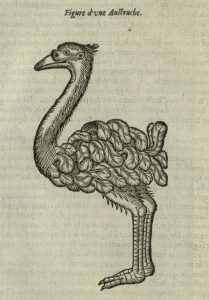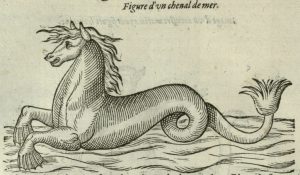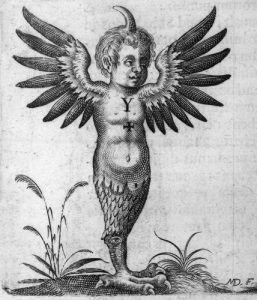~This post courtesy Beth Lander, College Librarian, Historical Medical Library, The College of Physicians of Philadelphia
On March 9, 2017, Imperfecta opens in the Mütter Museum, an exhibit curated by the staff of the Historical Medical Library, which will examine in text, image, and specimen how fear, wonder, and science shaped the understanding of abnormal human development.
One facet of this story is how people, laymen and scientists, reacted to new information in a time of discovery and upheaval. Steve Desch, an astrophysicist from the University of Arizona, said, “Humans have a strong instinct to ignore scientific findings, until those discoveries challenge the stories we tell each other about ourselves.” This tendency to ignore earth-shattering discoveries that fundamentally change how humans see themselves is a behavior that is as old as human existence itself. For example:
In 1543, Copernicus confirmed that our solar system is heliocentric. Martin Luther, a man who threw the religious world into upheaval by hammering his Ninety-Five Theses on a church door in Wittenberg 26 years before, complained that “There is talk of a new astrologer who wants to prove that the earth moves and goes around instead of the sky, the sun, the moon, just as if somebody were moving in a carriage or ship might hold that he was sitting still and at rest while the earth and the trees walked and moved. But that is how things are nowadays: when a man wishes to be clever he must needs invent something special, and the way he does it must needs be the best! The fool wants to turn the whole art of astronomy upside-down.”
In 1859, Charles Darwin published the “Origin of the Species.” The theory of evolution was adjudicated in part at the Scopes Trial in 1925. We are still adjudicating the concept of evolution in society, even when faced with antibiotic resistant strains of tuberculosis and syphilis.
In 2012, the existence of the Higgs Boson was confirmed. The Higgs is the particle that gives other particles mass. Without the Higgs, there can be no matter. Without the Higgs, there is no creation.
Let’s step back about 450 years, to a period of time in which Western Europe was coming to grips with discoveries made through the exploration of Africa, the “New World,” and the far reaches of the Pacific; to a time when the printing press, first used by Johannes Gutenberg, exponentially expanded the amount of books and pamphlets available; to a time when people were challenged by, and questioned, new information.
One of the most extraordinary books to document these discoveries is Les Oeuvres by Ambroise Paré, published in 1575. Paré was a barber/surgeon who gained invaluable experience on the battlefield. Considered to be the greatest surgeon of his time, Paré’s works cover the spectrum of surgery, medical instrumentation, childbirth, as well as the unique and unusual. Here, Paré shows his readers an ostrich, a bird that we would not consider unusual in any way:
However, in Paré’s work, our common ostrich is cheek to jowl with images like this:

Quite literally, a seahorse. How did people in the 16th century learn about the seahorse? Did explorers return with specimens? Was the name transliterated from another language? Were woodcuts like this drawn based on second-hand information?
The use of woodcuts was very similar to how we use digital images today. They were passed from printer to printer, reused and repurposed, often tweaked or re-cut to fit the perceptions of local communities. An excellent example of this comes from March 1512, when a child was born somewhere between Ravenna and Bologna in Italy. This child’s birth was so depraved, so shocking, that the baby was ordered starved to death by Pope Julius II within weeks of its birth. Known as the “Monster of Ravenna,” its birth was seen as a sign from God that the city of Ravenna had somehow sinned. Lucca Landucci, an apothecary in Florence, wrote the following in his diary:
“We had heard that a monster had been born at Ravenna, of which a drawing was sent here; it had a horn on its head, straight up like a sword, and instead of arms it had two wings like a bat’s, and the height of its breasts it had a fio [a Y shaped mark] on one side and a cross on the other, and lower down at the waist, two serpents, and it was a hermaphrodite, and on the right knee it had an eye, and its left foot was like an eagle. I saw it painted, and anyone who wished could see this painting in Florence. It was evident, what evil the monster had meant for them [the city of Ravenna]! It seems as if some great misfortune always befalls the city when such things are born.”
The great misfortune was the sack of Ravenna by French troops in April 1512 during the War of the Leagues of Cambrai. The Pope, angered that his troops were defeated during the battle, ordered what he perceived as the divine cause of his loss put to death.

This image of the Monster of Ravenna comes from Fortunio Liceti’s book, De Monstrorum Caussis, which was first published in 1616, more than a century after the baby’s birth. Why such a birth would have been considered a direct intervention by God is due partially to the concept of preformation, the idea that an embryo develops from a completely formed version of an organism. How could people come to grips with the idea that God had placed a monster in a woman’s womb?
Images of the Monster of Ravenna changed as the woodcuts traveled across Europe. Elements of deformities displayed changed rapidly, and began to mingle with other images of abnormal births or mythical beasts. As the image moved across Europe, it was adapted and contextualized to mirror local or regional fears and superstitions. To quote Armand Marie LeRoi, the author of the book Mutants: On Genetic Variety and the Human Body (2005), “When [the image] left Ravenna, it had two legs; by the time it arrived in Paris, it had only one. In some prints it had bat wings, in others they were more like a bird’s; it had hermaphrodite genitalia or else a single large erection.”
Medical texts often represented both the popular notions of monsters as portents, or punishments from God, as well as ideas that we would recognize as having some basis in the scientific method. Ambroise Paré used empirical observation to challenge many accepted tenets of battlefield medicine. This use of observation is evident in his 1573 book, Deux livres de chirurgie, a book mainly about surgery, but which included a chapter about monstrous births. In this book, Paré lists thirteen reasons why monstrous births occur:
The glory of God.
God’s wrath.
Too great a quantity of seed.
Too little a quantity of seed.
The imagination.
The narrowness or smallness of the womb.
The indecent posture of the mother, as where, being pregnant, she has sat too long with her legs crossed, or pressed against her womb.
A fall, or blows struck against the womb of the mother, being with child.
Through heredity or accidental illness.
Through rotten or corrupt seed.
Through mixture of mingling of seed.
Through the artifice of wicked spiral beggars.
Through demons and devils.
This list demonstrates the intersection between superstition and science, between preformation and epigenesis, the theory, now commonly held, that an embryo forms progressively from an undifferentiated egg cell. The foundation for the theory of epigenesis comes from the work of William Harvey, who published Exercitationes de generatione animalium in 1651. Thirteen chapters of this book depict the day-to-day development of chicken embryos, in which Harvey discovered the cicatricula, the area of an embryo from which generation proceeds.
Bear in mind that, during the 75-year period between Paré’s Deux livres de chirurgie and Harvey’s early work in embryology, Europe was torn apart by disease – episodes of the plague occurred across the entirety of Europe 17 times between 1494 and 1648, with an estimated mortality rate between 20 – 40%. Europe was also torn apart by war. The Thirty Years War began in 1620, with conservative estimates of civilian mortality between 15 – 20% of the total population.
It is no wonder, then, that humans, when challenged by new information – or a complete upheaval of their lives – need to adapt that new information and make it part of their own story in order to make sense of their world. The story of Imperfecta is the story of how we try to synthesize new information, a synthesis that is often fraught with fear and suspicion. I welcome you to join us on March 9th for the opening of Imperfecta.





